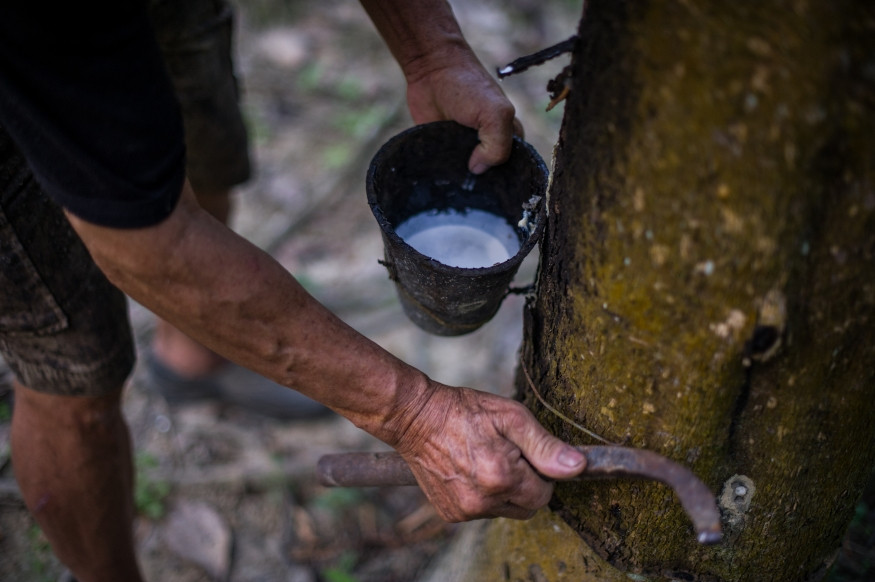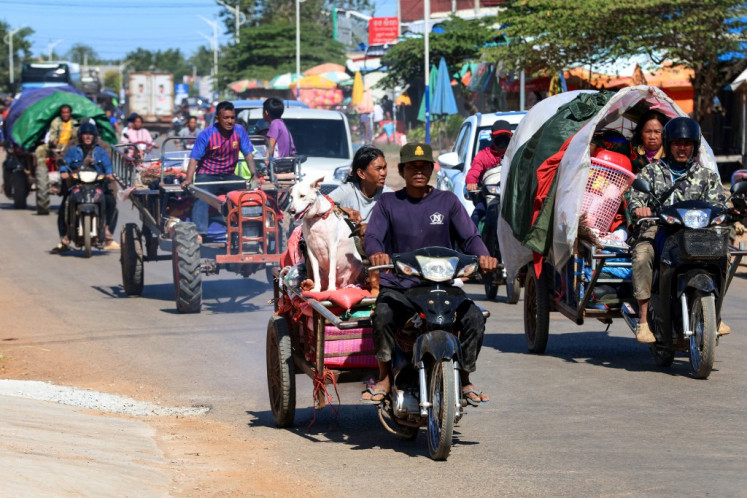Popular Reads
Top Results
Can't find what you're looking for?
View all search resultsPopular Reads
Top Results
Can't find what you're looking for?
View all search resultsShrinking domestic industry threatens RI rubber exports
A variety of factors are behind the decline in the rubber industry in Indonesia, which might be left playing catch-up as the global demand for the commodity drives downstream expansion.
Change text size
Gift Premium Articles
to Anyone
T
he world is expecting expansion of the rubber industry in the near future, but Indonesia may not get a piece of the pie in the face of lagging downstream of the commodity.
The value of global rubber market is expected to reach US$51.21 billion by 2027, from $40.77 billion in 2019, due to rising demand from the automotive, construction and aerospace industries, according to a report from Fortune Business Insights.
Other factors include the expanding market for natural rubber, driven by increasing demand for tires and industrial durable goods, such as linings for petroleum and chemical tanks, as well as automotive gaskets and seals.
Aziz Pane, chairman of the Indonesian Rubber Council, told The Jakarta Post on Wednesday that Indonesia might not be able to develop its downstream rubber industry in time to seize the enormous opportunity.
“Indonesia’s rubber industry has suffered a significant decline,” Azis said, pointing to an increasing number of rubber factories that had closed in the last four years.
Read also: RI, Malaysia seeks to soften EU palm oil stance
The closures were due to declining raw materials, he explained, whereas other countries were continuing to intensify plantation expansions and downstream industry development.
Azis pointed to the example of Thailand, where almost all upstream output was used as inputs for that country’s rubber industry. In contrast, roughly a mere 15 percent of the total rubber output in Indonesia was absorbed by the domestic industry.
Indonesia produced 3.14 million tonnes of natural rubber last year, according to Statistics Indonesia (BPS), a figure that has remained stagnant for the past decade.
According to the International Trade Centre’s online database Trade Map, Indonesia is the world’s second-largest exporter of natural rubber after Thailand, but its output has been fluctuating on a downward trend for at least the last five years.
BPS data showed that Indonesia shipped 3.94 million tonnes of rubber in 2017, after which rubber shipments declined steadily each year to reach 2.78 million tonnes in 2022, a total decline of almost 30 percent.
“If the condition continues to persist today, Indonesia will not be able to maintain its position as the second-largest rubber producer worldwide, let alone develop its downstream industry. [It is] a pity, because [Indonesia] has enormous potential,” Azis said.
Erwin Tunas, executive director of the Indonesian Rubber Producers Association (Gapkindo), told the Post on Wednesday that the rubber industry had a nationwide processing capacity of 4.6 million tonnes but it only see 2.6 million tonnes supply of the raw material.
This had resulted in a relatively low utilization rate of 57.4 percent, he continued, and many rubber factories ended up closing because of a shortage of natural rubber.
“Indonesia has a relatively high processing capacity, but it is not coupled by steady growth in natural rubber [output],” Erwin told the Post on Wednesday.
He attributed the decline in production primarily to the lack of rubber rejuvenation at plantations, combined with disease and extreme weather impacts from La Niña in the last three years.
Consequently, he said, many farmers were switching to cultivating oil palms instead of rubber trees because they were deemed more profitable.
For existing smallholder rubber farmers, their challenges had been exacerbated by a growing difficulty in obtaining subsidized fertilizers in recent years, Erwin said.
Read also: Tire shortage may imperil RI coal production, exports
Statista reported that the average global price of rubber was $1.54 per kilogram as of this April. This marked a sharp fall from its peak price of $4.82 per kg in 2011, according to the Singapore Commodity Exchange.
In line with the global price decline, Indonesia’s farm gate price for rubber had dropped to between Rp 8,000 and Rp 9,000 per kg, while the ideal price was above Rp 10,000 per kg, Erwin said.
Jom Jacob, chief analyst and cofounder of WhatNext Rubber Media International, said Indonesia used to be the preferred source of natural rubber for many automobile tire companies in the world, mainly because of its cost advantage over its Southeast Asian peers.
“However, Indonesian [natural rubber] has lost its cost advantage over the past few years largely due to the poor yield of latex from its rubber holdings,” he wrote in a LinkedIn Pulse article published in August 2022.
The industry’s shrinking trend was likely to continue unless “the rubber holdings in the country are transformed to be economically viable by raising the average yield”, Jacob wrote.
This would include “a well-designed accelerated replanting programme, supported by attractive financial incentive that meets the huge replanting cost and the development cost till replanted trees start yielding” after a gestation period of around seven years.










